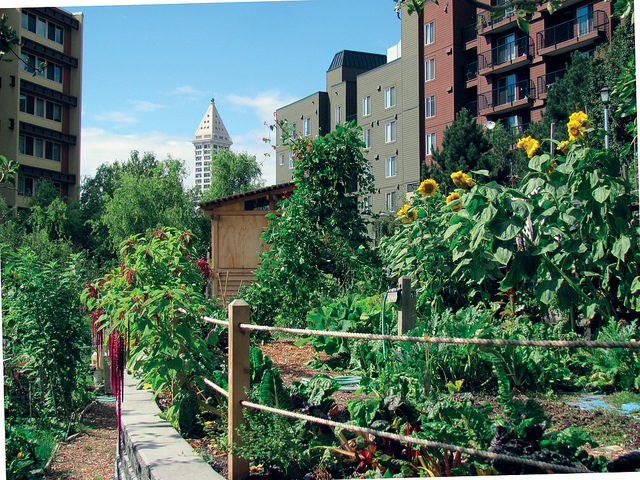How City Blooming can Save You Time, Stress, and Money.
How City Blooming can Save You Time, Stress, and Money.
Blog Article
A Biased View of City Blooming
Table of ContentsSome Of City BloomingThe Best Guide To City BloomingHow City Blooming can Save You Time, Stress, and Money.Fascination About City BloomingThe smart Trick of City Blooming That Nobody is Discussing
Interested in expanding food to buy in the City of Chicago? Thinking of beginning an area garden? Adjustments to the Chicago Zoning Statute permit farming uses like community yards and urban ranches in numerous parts of the city. Below is a list of regularly asked concerns regarding the rules and policies that cultivators ought to think about when planning an urban agriculture job.
The zoning amendment does not customize any various other codes handling composting, building authorizations, buying or renting City had building, service licenses or ecological contamination. There are existing codes that manage these concerns and they continue to be in complete impact and might be applicable to your task. Neighborhood gardens are usually owned or managed by public entities, public companies or community-based companies and kept by volunteers.
Urban farms expand food that is intended to be sold, either on a not-for-profit or for-profit basis. Due to their industrial purpose, metropolitan ranches need an organization certificate.
The Definitive Guide for City Blooming
Composting is allowed however only for plant material that is created and made use of on site. The quantity of compost product can not exceed 25 cubic yards at any kind of given time according to the standards in 7-28-715 of the City's Municipal Code. Yes. Due to the fact that the dirt at most brand-new yard websites requires modifying, garden compost, soil, wood chips, or other materials can be obtained to construct or improve the growing room - balcony and patio garden design.

If a structure authorization is required after that the hoophouse will be thought about an accessory building. You can find out even more concerning the building license demands by getting in touch with the Division of Buildings. The 25,000-square-foot size restriction is planned to avoid a solitary community yard from controling a given block or detracting from the block's existing residential or industrial personality.
The limitation does not relate to gardens found in Public Open Space (POS) areas. Can there be more than one neighborhood garden that is 25,000 square feet on a single block? Yes. The dimension restriction relates to specific yards, not to individual blocks. No. Fencing is not called for, nonetheless, gardens that have big car parking locations might be called for to set up secure fencing or various other landscaping attributes.
The 9-Second Trick For City Blooming
B1 & B2 areas need that all industrial usage tasks be performed inside your home. R districts restrict business activity. The policies mirror the purpose and intent of the Zoning Code. Is secure fencing required for city ranches? Yes. Fences might be called for, together with landscape design and screening, for sure car park areas and outdoor job or storage space areas relying on location and the details activity occurring.
Urban ranches require building authorizations and zoning approvals prior to building (home and garden). Various other forms of city review may be needed depending on certain frameworks, activities, size, landscaping, licensing, public heath and stormwater monitoring issues.
The Department of Service Affairs and Consumer Protection can aid figure out the particular type of service license that's called for. Off road parking is needed for most business jobs in Chicago. The required number of vehicle parking spaces is based on the number of workers functioning on website and not the square video of the growing room.
Not known Details About City Blooming

Yes. A metropolitan farm can offer compost material produced on website, however, the procedure must abide with the laws in 7-28-715 of the Chicago Municipal Code. Yes. Aquaponic systems are enabled indoors on metropolitan farms in several zoning areas. A zoning review and structure license is required in order to mount frameworks or systems and a business certificate is required as defined above.
As much as 5 hives or colonies of honey bees might be kept as an accessory use. Nonetheless, beekeepers must register with the blog here Illinois Department of Agriculture. For additional information regarding the proposed zoning amendment you may get in touch with the Department of Housing and Economic Growth, Bureau of Planning and Zoning at 312.744.8563.
Farming in cities and city areas A city farm in Chicago. Urban agriculture describes numerous methods of growing. https://cityblooming.godaddysites.com/f/city-gardening-embrace-urban-greenery, handling, and distributing food in urban areas. The term additionally applies to the location activities of pet husbandry, aquaculture, beekeeping, and cultivation in an urban context. Urban farming is identified from peri-urban agriculture, which takes area in rural locations at the side of residential areas.
Unknown Facts About City Blooming
, who look for to create social networks started on a shared values of nature and neighborhood holism. These networks can establish by method of official institutional assistance, ending up being incorporated right into neighborhood town planning as a "transition town" movement for lasting urban advancement.
The more straight access to fresh vegetable, fruit, and meat items that might be know via urban agriculture can enhance food security and food security while reducing food miles, bring about lower greenhouse gas discharges, thus adding to climate change mitigation. Some of the very first proof of metropolitan farming originates from Mesopotamia.
Report this page